If you’ve spent much time around here, you know that for a decade, I’ve been trying to “paint the picture” of attractions – how they came to be, what they’re like to experience, and how they evolve. Our interconnected, inclusive collections of ride histories include the stories of closed, classic Lost Legends, cutting-edge Modern Marvels, cringe-worthy Declassified Disasters, and never-built Possibilitylands – each of which (I hope!) helps spark memories and preserve these rides for future generations of fans.
If a picture is worth a thousand words, then hopefully my next major project here at Park Lore makes sparking those memories a whole lot easier to do! I couldn’t be more excited to launch a new, growing, comprehensive, and interconnected portfolio of hand-drawn ride layouts representing attractions from around the globe! With over 100 layouts across three collections, I’m hopeful that these floor plans become a useful tool for all of us when it comes to telling the stories of the rides, parks, and industry we love.
(I’ve made the full, HD versions available on Park Lore’s Flickr with a CC BY-ND Creative Commons license so they can be shared and distributed.)
First up, THEN & NOW – a series of hand-drawn ride layouts dedicated to exploring how the same physical space can house vastly different experiences… Be warned that this series highlights closed, fan-favorite rides and their (sometimes inferior) replacements, so have your tissues ready. But if you can bear to use the slider in each pair to explore these spaces, you may be surprised the context it adds to both the before and after…

Before you go, a quick request! Each of the 100+ ride layouts you’ll find in these collections was hand-illustrated by me with a lot of time and love. I hope you zoom in, slide-to-compare, download, explore, and share them, but please be kind and cite, tag me (@themeparklore), and link to this story if you do!
Since Park Lore is ad-free (and clickbait-free!), I proudly make $0 in ad revenue. So if you appreciate Park Lore’s in-depth, interconnected theme park storytelling and analysis, consider becoming a Member for as little as $2 / month! Members can unlock rare concept art in every story, audio streams, 100+ Extra Features, and more!
1. Adventure Thru Inner Space (1967 – 1985) // STAR TOURS (1987 – Today)
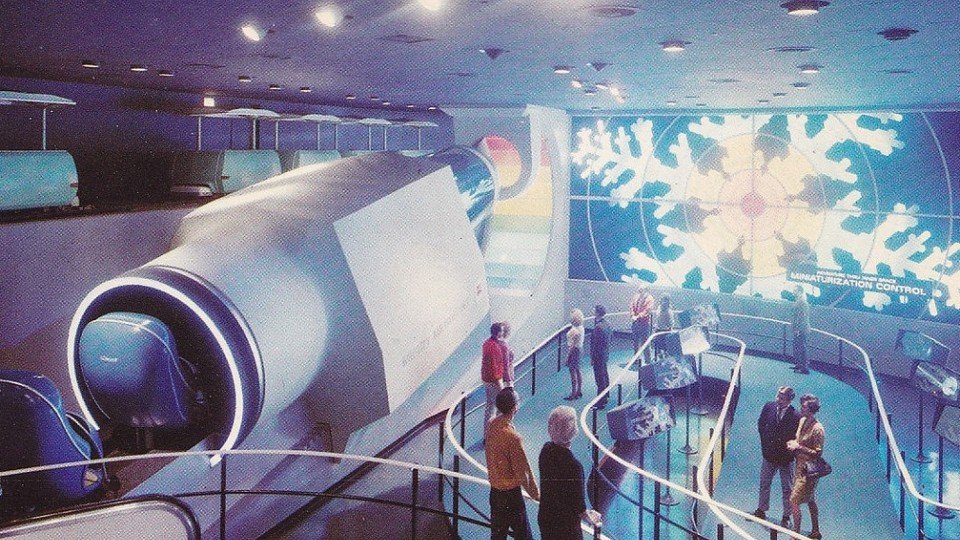
Opened in 1967 as the scientific centerpiece of Walt’s New Tomorrowland, the Lost Legend: Adventure Thru Inner Space was a mid-century marvel. Descending a winding queue toward the Monsanto Mighty Microscope, guests would board “Atommobiles” (the first ever Omnimovers – for Members, one of our one of our Seven Modern Wonders of the Theme Park World) and pass into the abstract world of a snowflake’s molecular structure. Packed with iconic visuals (and narrated by Paul Frees, the Haunted Mansion’s “Ghost Host”), the ride was a trippy ode to the optimistic foundations of the Atomic Age.
If Inner Space represented the last holdout of a time when Tomorrowland was about real, scientific hopes for the future, then its replacement signaled a new direction entirely. Opened in 1987, the Lost Legend: STAR TOURS was the first E-Ticket of then-CEO Michael Eisner’s “Ride the Movies” era, ushering in bold, thrilling, blockbuster attractions filled with the characters that mattered to modern audiences. (Worth noting: Despite feeling a whole lot newer than its scientific predecessor, STAR TOURS has actually been around longer than Inner Space was to begin with!)
THEN & NOW: Adventure Thru Inner Space and STAR TOURS are a great first stop on our Then & Now tour, so drag the slider in the image above to compare them. Though they inhabit the same physical space, they really couldn’t be more different as ride experiences. Surprisingly, only “slight” modifications to the Inner Space showbuilding were required to fit STAR TOURS (for example, the roof was removed to lower in four simulator pods, then was rebuilt with a pop-up extension to accommodate their movement.)
Of course the most interesting thing about the reused space isn’t how the two rides differ, but what they have in common: the queue. That iconic, descending ramp remains, untouched, merely swapping the Mighty Microscope for a parked Starspeeder. Since that queue space was recreated when up-sized, six-pod, from-scratch installations of STAR TOURS were built in Orlando, Tokyo, and Paris, the DNA of Adventure Thru Inner Space lives on across three continents… by way of parks that never had the ride to begin with!
2. Mr. Toad’s Wild Ride (1971 – 1998) // The Many Adventures of Winnie the Pooh (1999 – Today)
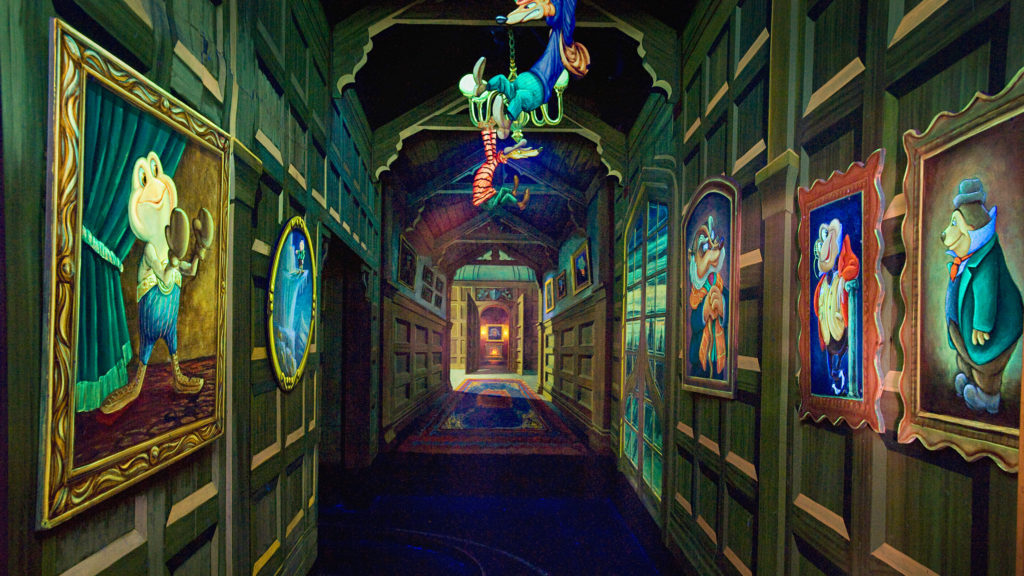
When Mr. Toad’s Wild Ride opened alongside Magic Kingdom in 1971, it wasn’t just a copy of Disneyland’s 1955 Opening Day Original… instead, Imagineers had taken the move East as an opportunity to upsize the zippy, zany trip through the English countryside. The Lost Legend: Mr. Toad’s Wild Ride at Walt Disney World was a hoot, with two separate-yet-intertwined tracks that let guests experience the joys of “motormania” firsthand… each ending with riders being struck by a train and waking up in Hell. Seriously.
However, in the mid-’90s, a major resurgence in Winnie the Pooh’s popularity reportedly saw an edict handed down from on high: both Disneyland and Walt Disney World needed a Pooh attraction… and more importantly, a paired retail location to go along with it. At Magic Kingdom, Mr. Toad was obviously the first to fall over Snow White and Peter Pan, in part because his double-sized dark ride could comfortably fit a full Pooh complex with a dark ride, meet-and-greet, and gift shop in one.
THEN & NOW: Mr. Toad’s nimble, chaotic jalopies took their last trips to “Nowhere in Particular” on September 7, 1998, and less than a year later, the lumbering, bumbling beehives of The Many Adventures of Winnie the Pooh took their place. Naturally, Pooh’s ride has just one track rather than Toad’s two, and features much larger scenes.
More importantly for Disney, though, Pooh’s dark ride replaced a lesser-known, niche Disney character with a highly merchandisable one… and true to decree, got a retail space to match. It’s probably worth noting, though, that when you “exit through the gift shop” at the end of the Many Adventures of Winnie the Pooh, you’re literally standing in Hell. Or at least, where it once was…
3. The Great Movie Ride (1989 – 2017) // Mickey & Minnie’s Runaway Railway (2020 – Today)

At the grand opening of the Disney-MGM Studios opened in 1989, the Lost Legend: The Great Movie Ride was one of only two rides in the park. Luckily, it was an epic one. Housed in the iconic Chinese Theater, this 25-minute dark ride was “EPCOT Center” caliber, taking guests on “A Spectacular Journey Into The Movies.” Narrated by a live, on-board host, “moving theaters” would advance through the most famous (licensing accessible) scenes in cinema history, from Casablanca to Raiders of the Lost Ark.
Often described as the park’s “thesis” attraction – its centering ride a la Spaceship Earth – no one would’ve imagined that the Great Movie Ride would ever go dark. A wholesale swap for Disney, Pixar, Marvel, Star Wars, and Fox films? Definitely in the cards… But a complete closure? Never! Until August 2017, when it was “curtains” for the classic. After a 28 year run, the doors of the Chinese Theater were closed.
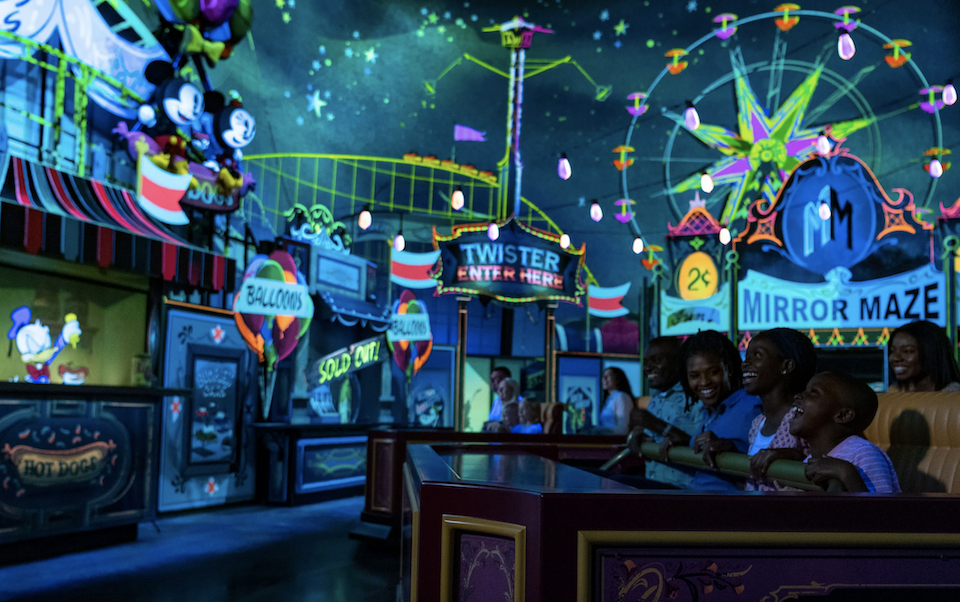
In March 2020, its replacement – Mickey and Minnie’s Runaway Railway – made its red carpet debut. Now, the Chinese Theater hosts the premiere of a brand new cartoon short (“Perfect Picnic”), when a goofy mishap leads guests to cross into the cartoon world of Paul Rudish’s modern Wonderful World of Mickey Mouse shorts. The trackless dark ride sees Goofy’s peaceful ride around Runnamuck Park gone awry, sending guests through incredible animated environments cast in such vivid color, texture, and depth, it’s hard to know what’s real and what’s projected.
THEN & NOW: Aside from their loading areas, there are hardly any parallels between the Great Movie Ride and Runaway Railway. But there is one connection. The beautiful, opulent theater space that served as a queue for the Great Movie Ride (showing clips from the movies guests were about to pass through) has been subdivided into two smaller theaters (each maintaining the Chinese Theater aesthetic) that serve as the new ride’s preshow – a cinematic overlap between two very, very different rides.
4. Maelstrom (1988 – 2014) // Frozen Ever After (2016 – Today)
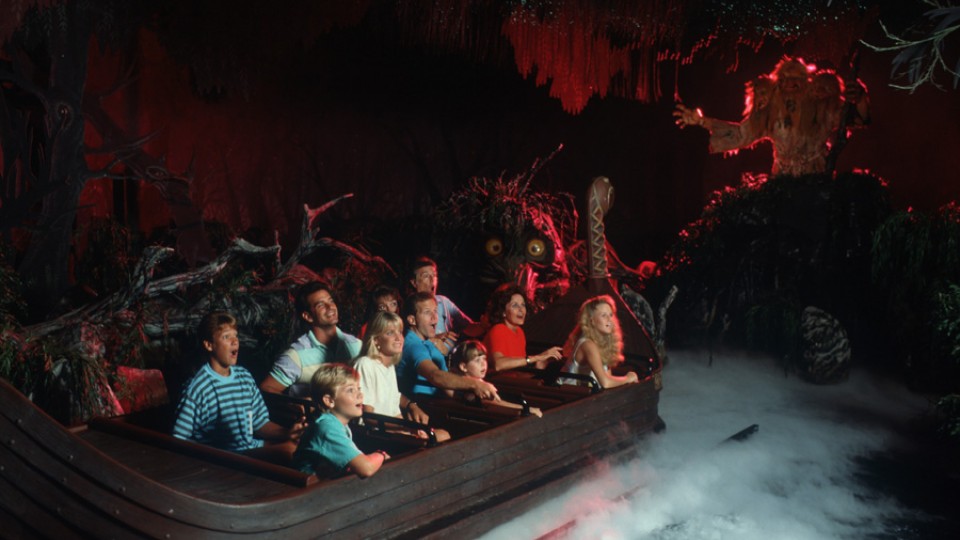
Opened in 1988 as part of the park’s then-new Norway pavilion, the Lost Legend: Maelstrom was a rarity: an actual ride in EPCOT’s World Showcase. Boarding dragon-headed Viking longboats, guests sailed up a waterfall under the eye of Odin before beginning a journey through a historic Viking village, an enchanted marsh populated by trolls, and a backwards dip into the frozen tundra before finally splashing down beneath a Norwegian oil rig – a pretty impressive itinerary for three and a half minutes! Exiting guests were then moved into a theater to view a promotional film about Norwegian industry and tourism.
Maelstrom was an oddity, and just the kind of retro-absurdist ’80s travelogue that only EPCOT Center could produce. Even in the increasingly IP-obsessed Walt Disney Company of the 21st century, Maelstrom seemed certain to sail on… after all, what else could possibly make sense in a Scandinavian-themed pavilion in the cultural World Showcase?!
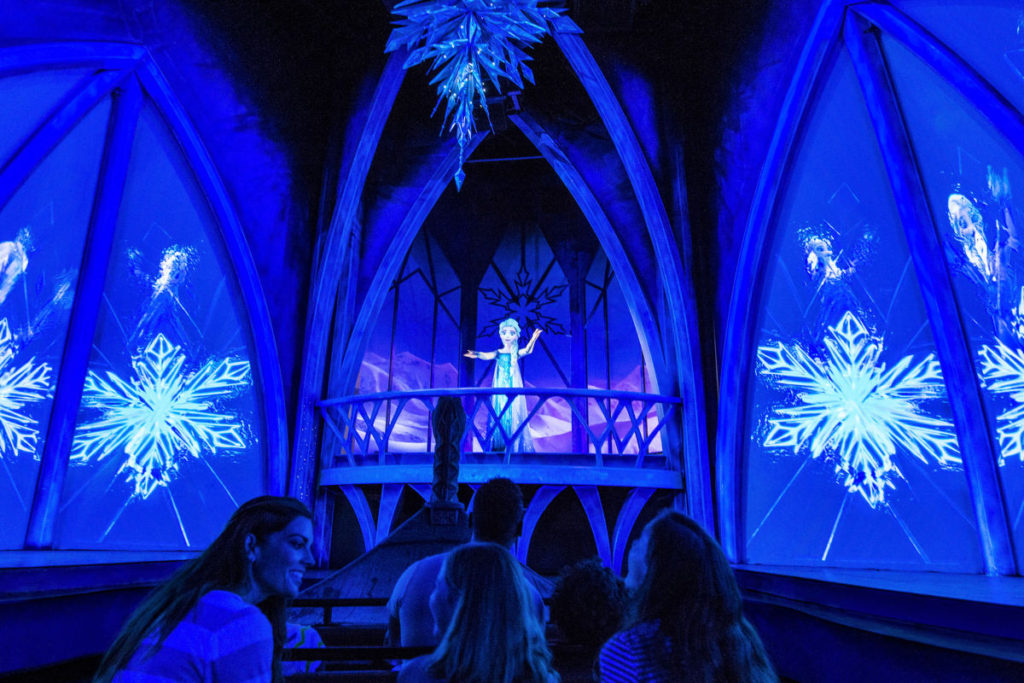
Then, in 2013, Frozen became the highest-grossing animated film of all time. Though it’s technically set in the fictional kingdom of Arendelle, the world of Frozen and the fairy tale it’s inspired by (Hans Christian Andersen’s The Snow Queen) are certainly rooted in Scandinavian style and tradition… not that that would make 2016’s Modern Marvel: Frozen Ever After any less controversial. Now, the same Viking longboats set sail for a “Winter Summer Day Celebration” reprising songs from the hit film.
THEN & NOW: Putting aside whether or not Frozen belongs in World Showcase (or, for that matter, if it deserves a better ride than a reskin of 1988’s Maelstrom), Imagineers did a nice job making use of what they were given in an exceedingly awkward show building.
Notably, guests essentially enter through the former exit. Maelstrom’s “Spirit of Norway” post-show theater was repurposed into added queue space (disguised as a Town Square in Arendelle), routing guests to a new, combined load and unload. That freed up the segment of track that formerly served as Maelstrom’s empty-boat return-to-load and boarding area to be slightly altered and used as two additional show scenes, adding at least a little heft to the too-brief ride.
5. The Living Seas (1986 – 2005) // The Seas with Nemo & Friends (2007 – Today)
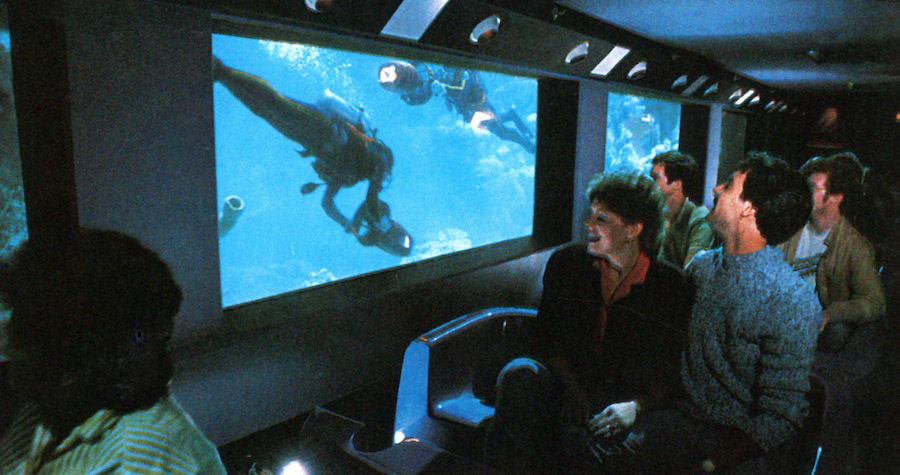
The Lost Legend: The Living Seas opened in 1986, and though the exploratory Seabase Alpha aquarium might’ve been the destination, getting there was half the fun. From a winding queue showcasing artifacts of ocean exploration past, guests encountered two preshow films, a deep-sea “Hydrolator” ride, and then a modified Omnimover “Seacab” journey through the world’s largest saltwater aquarium tank.
Once they’d reached the central “deep sea” research base, guests could finally disembark and explore at their own pace across two levels of exhibits, interactives, and animal displays before taking return Hydrolators back to the surface at their leisure.
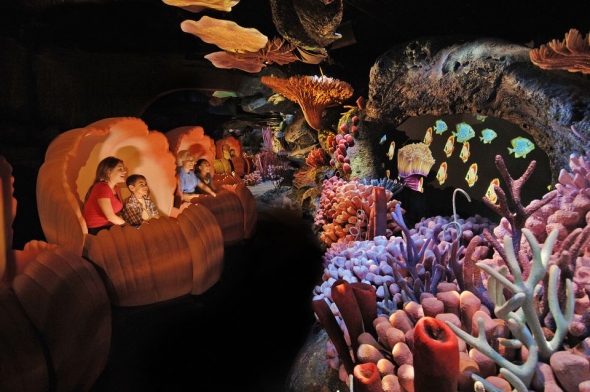
Throughout the ’90s and early 2000s, EPCOT sought to soften its starkness, intensity, and (by then) retro-futuristic ’80s influence. 2003’s Finding Nemo – at that time, the highest-grossing animated film of all time – served as the perfect inspiration. A multi-part, piece-by-piece reimagining saw teal and orange overtake the overtly ’80s “Seabase.” By 2007, the transformation was complete, and The Seas with Nemo & Friends was official.
THEN & NOW: Aside from aesthetics, the most obvious change between the two versions of the Seas has to do with the entry experience. Now, the transition to “underwater” occurs in an extended queue (physically replacing the old preshow), with guests descending beneath a dock to board the Omnimover ride (now with clamshell embellishments.) To facilitate the added queue space and the addition of proper dark ride scenes, the Hydrolators and Theater 1 were removed. Theater 2 was also unused until the popularity of Turtle Talk With Crush saw it relocated from Module 1C into Theater 2, with Module 1A now serving as its queue and preshow space.
You can disagree with Disney’s modifications to the Seas pavilion or prefer its iconic Hydrolator entry experience, but you’ve got to admit: Imagineers’ adaptive re-use of the space available is nothing if not impressive.



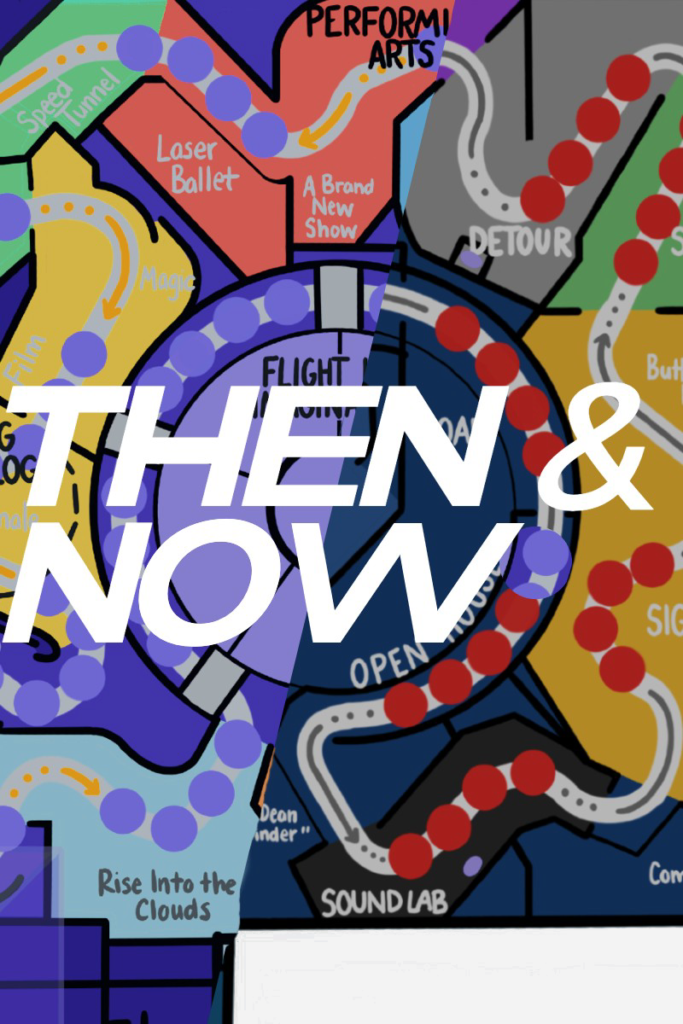
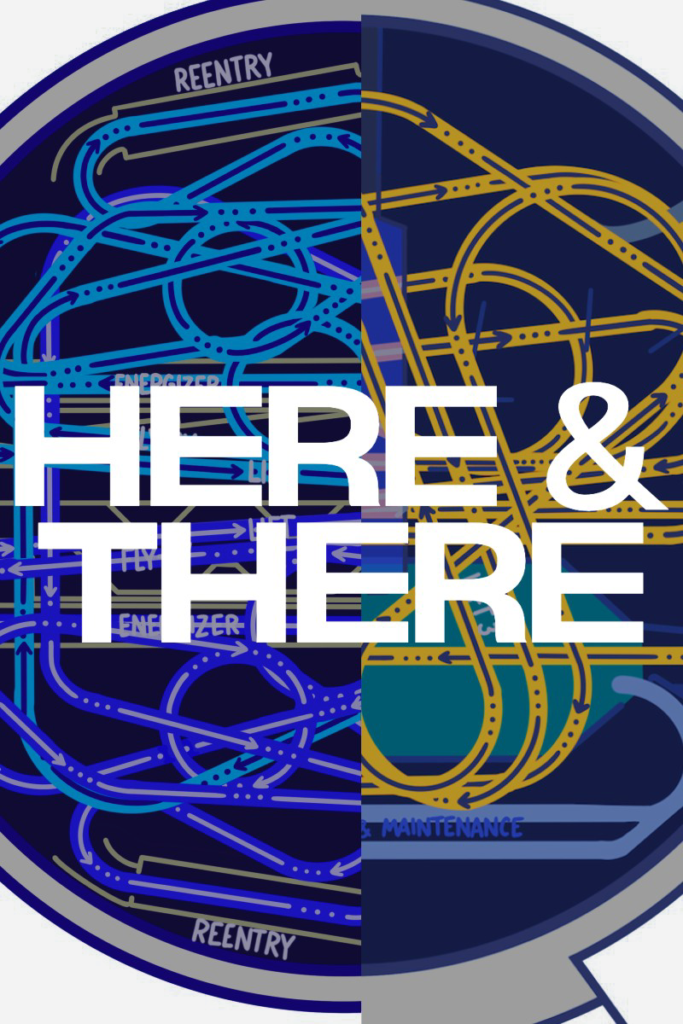

This is awesome!
Great job. Very interesting site. Thank you for making and sharing this.